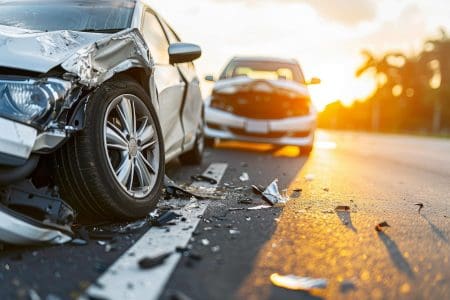
Auto Insights
Hitting the Road? Make Sure You Have Adequate Auto Liability Coverage
Auto insurance is perhaps the most common form of coverage in the United States. Yet, when it comes to carrying the right amount of liability protection, many Americans aren’t sure about what they need.
In this blog, the insurance experts at VTC provide an overview of auto liability coverage and its importance.
What Is Auto Liability Coverage?
The liability portion of auto insurance is strongly advisable and is usually required by law. Although minimum requirements may vary among states, all drivers are generally mandated to carry certain liability coverage to ensure they can pay for losses for which they are at fault. Liability coverage can insulate drivers from significant losses affecting third parties, including the following:
- Bodily injury — If a policyholder is responsible for an accident that injures another party, such as a pedestrian or occupants of another vehicle, this coverage can help pay resulting expenses, such as:
- Medical bills
- Lost wages
- Legal expenses
- Property damage — If a policyholder is at fault for damaging someone else’s property, such as colliding with another vehicle or crashing into a building, this coverage can provide financial assistance to compensate affected parties and pay for costs arising from resulting lawsuits.
Most auto insurance includes three separate liability limits within a policy. These clauses establish the maximum amount of financial aid capable of being covered and generally are listed as the following:
- Bodily injury liability limit per person
- Bodily injury liability limit per accident
- Property damage liability limit
Uninsured/underinsured motorist coverage is another type of coverage that could help you financially protect yourself in an accident. This coverage is sometimes sold separately as uninsured motorist coverage and underinsured motorist coverage. You can often add this coverage to your personal auto insurance policy to limit high out-of-pocket costs if you’re involved in an accident with a driver who doesn’t have any liability coverage (uninsured motorist coverage) or doesn’t have enough liability coverage (underinsured motorist coverage).
Ensuring Adequate Coverage
Motorists should consult with a qualified insurance professional to understand applicable auto insurance requirements. Failing to comply with relevant laws could lead to significant fines and legal penalties.
Even if not mandated to do so, carrying sufficient auto liability coverage is strongly advisable. Without suitable insurance, an accident could lead to devastating out-of-pocket costs that jeopardize a driver’s financial situation.
It’s also essential to understand the limitations of auto liability coverage, which should not be relied upon to cover a policyholder’s own losses. Such financial assistance generally must be acquired by including additional coverages in an auto insurance policy, such as the following:
- Collision coverage — This may help pay for damage sustained by a policyholder’s vehicle resulting from striking another car or stationary object (e.g., building, fence, tree).
- Comprehensive coverage — This may provide coverage for incidents not included in collision coverage, such as fires, crime and severe weather.
- Medical payments coverage — This may provide financial assistance for policyholders and their passengers if they are injured in an accident, regardless of who was at fault.
Learn More From an Auto Insurance Expert
Auto liability coverage is an essential form of financial protection for any person who owns or operates a motor vehicle. For more information, or to ensure you have the right amount of coverage, talk to the auto insurance professionals at VTC Insurance Group. You can reach us at 248.828.3377 or visit vtcins.com.
This blog is for informational purposes only and is not intended as legal advice.


